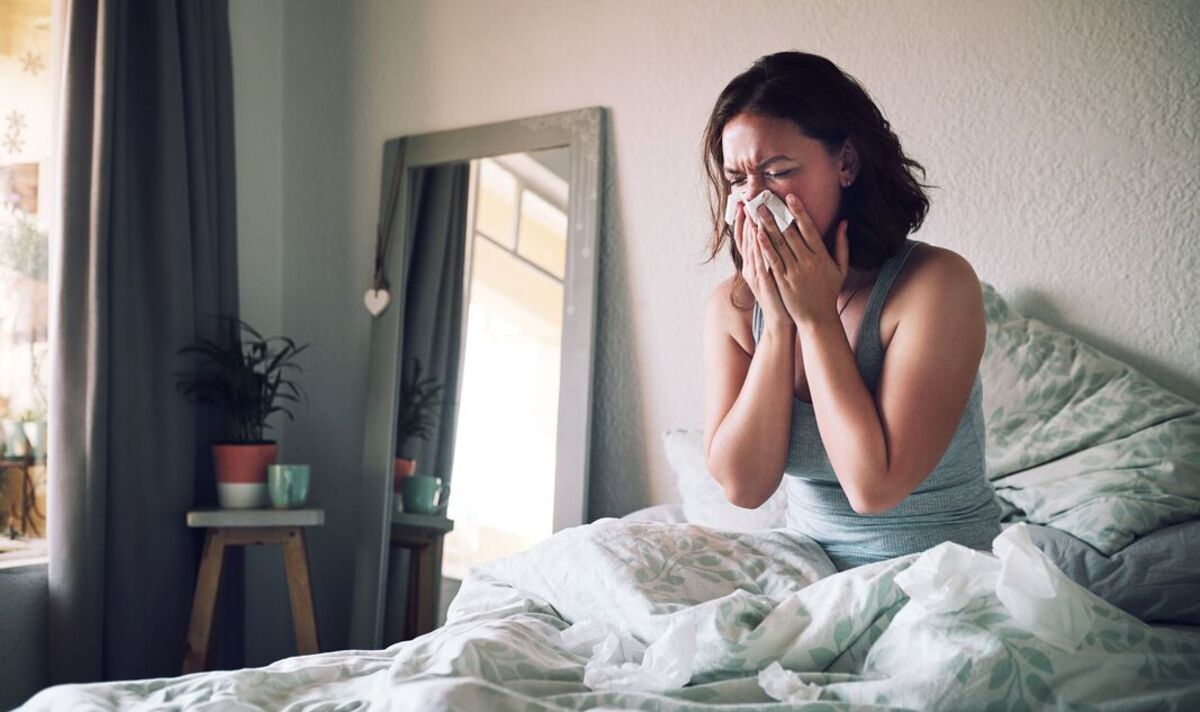Hay fever: Dr Chris Steele shares advice on avoiding pollen
Dr Nikita Patel, an Associate Medical Director at Vitality, said: “Hay fever is more common than people might imagine.” Affecting up to half of the British population, symptoms can include itchy eyes and throat, sneezing, and a runny or blocked nose. “As with many other allergies, the key to managing hay fever symptoms is avoiding exposure to the triggering allergens,” said Dr Patel.
This can be hard to do, however, as you’re likely to encounter pollen as soon as you open a window or step outside your home.
According to Allergy UK, people who suffer from hay fever are more prone to sleep disturbances during warmer weather.
Dreams Sleep Expert Sammy Margo highlighted an unusual remedy to help combat troublesome hay fever symptoms before going to bed.
Margo said: “It’s no secret that hay fever is synonymous with sleep disturbance, which leads to daytime fatigue, irritability, and decreased productivity.

“So, it’s important for hay fever sufferers to take steps to manage their symptoms and improve their quality of sleep.”
One method Margo recommended is going to sleep “with a sock filled with rice”.
Margo explained: “Sinus pressure is also a common symptom of hay fever.
“To combat this, fill a clean sock with uncooked rice and microwave it for 30 seconds. Place it on your forehead or over your eyes.”
Don’t miss…
New study links common sleep disorder and cognitive brain decline[STUDY]
Heart specialist shares 3 foods to help lower cholesterol[EXCLUSIVE]
Frequent flu linked to accelerated brain ageing, upping dementia risk[LATEST]
Margo continued: “Making sure that it is not too hot, sleeping with a sock filled with rice is a simple and effective method, which may help to soothe sinus pressure caused by hay fever.
“The warmth from the rice-filled sock may help to alleviate discomfort in the sinuses and promote relaxation.
“Additionally, the weight of the sock can provide a gentle pressure that may help to ease headaches and other forms of discomfort caused by hay fever.”
It may also be helpful to “sleep in a reclined position” to help relieve post-nasal drip.

“The reclined position can help to drain mucus away from the nasal passages, allowing air to flow more freely through the airways,” said Margo.
“There are several ways to sleep in a reclined position, such as using a specially designed wedge pillow, or adjusting the head of the bed to a slightly raised position.”
If you would rather not try the sock and rice method, Margo added that an eye mask could be useful.
“An eye mask can help block out light and create a darker sleep environment, which can help alleviate hay fever symptoms and promote better sleep,” she said.

“By reducing exposure to light, the body is better able to produce melatonin, which can help regulate sleep-wake cycles and promote more restful sleep.”
Margo added: “In addition to blocking out light, an eye mask can also help prevent rubbing and itching of the eyes, which can be a common symptom of hay fever.”
For daytime relief from hay fever symptoms, Dr Patel suggested:
- Shutting windows
- Avoiding buying fresh flowers
- Washing your clothes often to remove pollen
- Use over-the-counter medications, such as a nasal spray and antihistamines.
“It is important to read instructions that come with the medicine and listen to the advice from your pharmacist or doctor,” he added.
Source: Read Full Article
